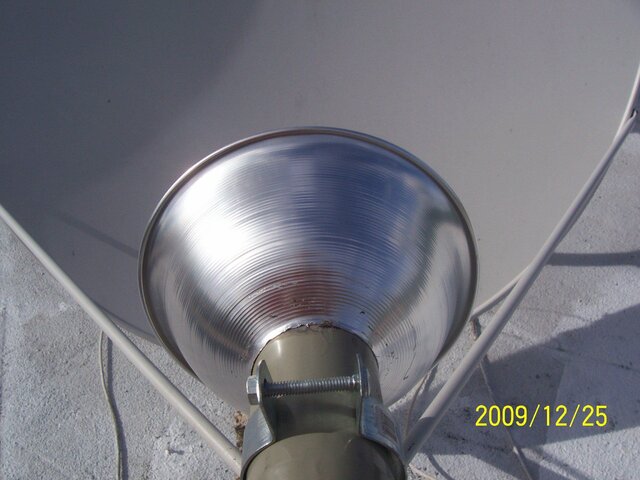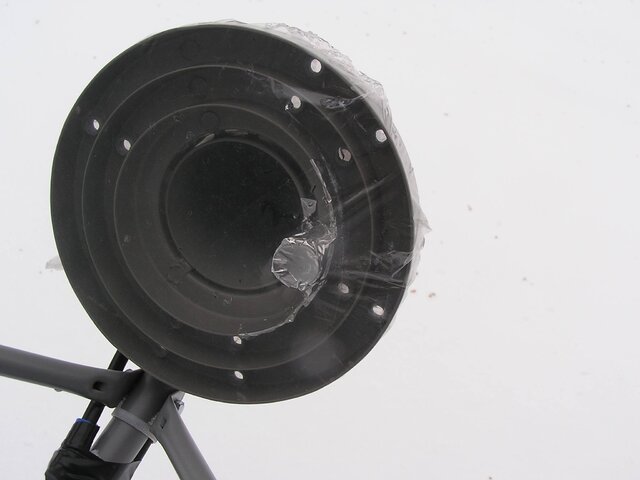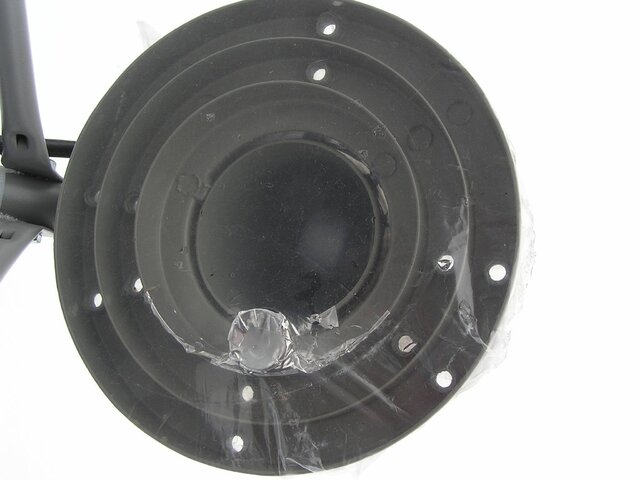Can you post your dishes F/D?
What Socket OD and length?
What skew on lnbf?
Must the socket be placed at the 3 O'clock position?
Your dish is motorized?
Consider using Minimo's BSC-621 spacer of 1/2" between Ku and C lnbf with this socket/scalar mod?
Here is some of the testing information I can share; I was using comercially purchased and home made versions of a conical scalars on a 76cm and 1 meter offset dish for C-band reception and seemed to out perform the flat scalar rings that came with the C-band LNBs. These dishes had f/d ratios between 0.55 and 0.58.
Once I purchased the 1.2 meter dish with an f/d ratio of 0.50 the flat scalars out performed the conical scalars and increased the signal quality an additional 10%.
And yes the 1.2 meter dish is motorized.
As to the position for locating the socket it seems to work best at either the 9 or 3 oclock position, I believe it has something to do with the oval shape of the dish.
As to the socket size, whatever it takes to fill the space of the scalar ring width. Actually the socket I choose is a little taller than the hieght of the ring but do not think that is to critical. Anything metal that fills the gap should work, be it a socket or solid metal plug.
I used a piece of aluminum tape to hold in place becuase that is what was handy, the photos I took look like its a clear piece of tape due to the fact that my scalar is covered with a clear plastic sandwhich bag to keep the snow and rain out.
As far as the skew on the LNB, it is skewed to zero mounted on the dish, the motor skews the LNB and dish for each satellite selected.
As to the LNB type used, I tried the BSC621 and also the dual output C-band GeosatPro, both spec out around 68db for gain and roughly 18K for noise figure. The DMX241 specs are slightly better, around 70db gain and 13K for noise. The DMX241 is what I am currently using in order to pick up RDFTV on 103W. Could not get the other two LNBs to keep a good signal on RFDTV. I still can not get AMGTV on 97W using the DMX241, dish is just to small and widely focused, think I am getting interference from 99W adding to the problem.
I would not count out the advantages the parobolic lamp shade might have for a 1.2 meter dish. It is shaping and amplifying the signal, focusing it back to the probes. When the weather warms up a bit I plan on testing this as well and compare the results.
One other note to make; placement of the flat scalar is critical. I found for best results the scalar is attached so that the throat of the LNB tube extends about an 1/8 inch inside the scalar ring.
My son loves TVU, I receive this channel on 87W C-band with roughly 96% quality. Using the 1.2 meter dish and this setup for C-band was my only option for TVU since they left KU band some time ago.








 :? What size socket, or is it immaterial (within reason)? Also, you stated that you used aluminum tape, but the tape in the photo is clear (I'm probably showing my ignorance here, but a little confused
:? What size socket, or is it immaterial (within reason)? Also, you stated that you used aluminum tape, but the tape in the photo is clear (I'm probably showing my ignorance here, but a little confused